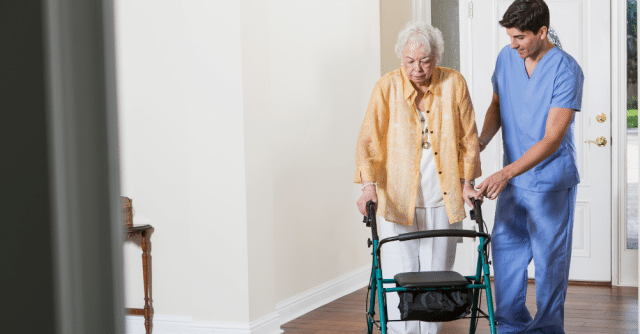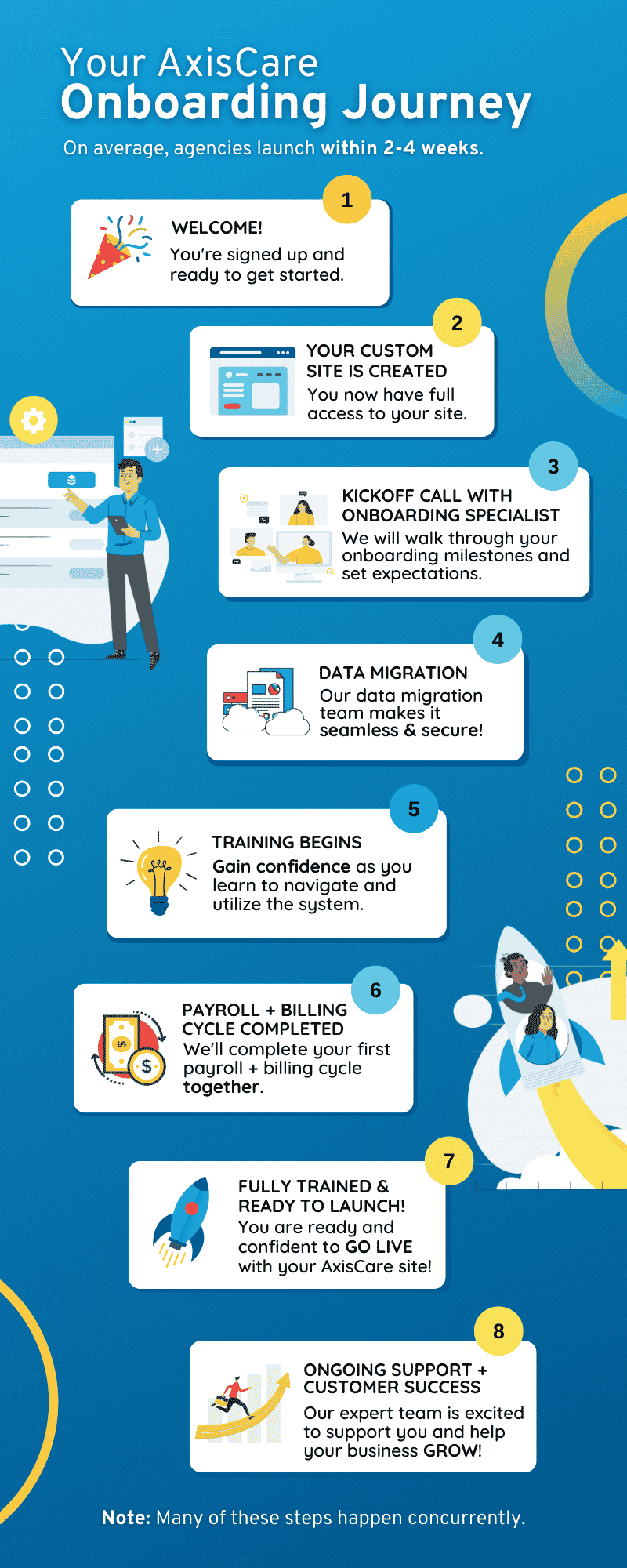Medical care is not a one-size fits all solution. There are certainly best practices and established protocols that need to be followed, but treating individual patients should be just that – individualized. While that may sound like a tall order, advancements in technology and home care software are making hyper-personalized treatment increasingly possible.
The most common way to administer and manage a patient’s at-home treatment is via a personalized home care plan. In this piece, we’ll cover how new advanced technologies in home care are making these plans even more comprehensive and effective.
Components of a Home Health Care Plan
This “master” care framework is a go-to resource for all essential patient information. Here’s what should be included in each plan, alongside any other details your organization deems important.
Assistance With Daily Activities
Some patients require non-medical care, which includes assistance with activities of daily living (ADLs). Practitioners may lend a helping hand with bathing, dressing, grooming, and toileting, all of which is detailed in the care plan.
Medication Management
Medication management requires exceptional precision and detail. Care plans include details like how to administer medicine, which side effects should be looked out for, and notes to ensure patients take medication as prescribed.
Nutrition & Meal Preparation
Health is a mosaic that includes eating well and staying hydrated. Care plans also describe any additional services required to ensure patients receive adequate nutrition and hydration, such as meal planning, grocery shopping, and meal preparation.
Emotional & Psychological Support
Arguably the most differentiating component of patient-centered care, emotional and psychological support – such as counseling, social work, and spiritual care – help patients feel well mentally as well as physically.
Determine Patient Needs
While building a care plan might seem like a daunting task, it simply needs to be taken one step at a time. The first order of business will be to determine the level and frequency of care a patient will need. This might vary depending on a patient’s medical condition, age, and lifestyle.
Medical History
Compile information about the patient’s past illnesses, surgeries, and significant health events. This step provides helpful context for future care, including insights into potential risk factors and help in understanding the patient’s overall health trajectory.
Conditions
Document any acute or chronic medical conditions that are currently affecting the patient. Understanding the nature and severity of these conditions is crucial for tailoring the care plan to meet their specific needs.
Medications
List all of the medications the patient is currently taking, including prescription medications, over-the-counter drugs, and supplements. Having a comprehensive medication record helps prevent adverse drug interactions and ensures proper care management. Utilizing software features like medication reminders can further enhance the patient’s adherence to their prescribed regimen.
Holistic Profiling
Holistic profiling involves looking at the patient as a whole individual, going beyond their physical health to encompass their mental, emotional, and social well-being. Relevant factors may include their living situation, support system, daily activities, and any cultural or spiritual considerations.
Involve Family in the Care Plan
Some patients’ families are very involved in their care, while other situations may be more complicated. In all applicable situations, conduct a care planning discussion to ensure alignment between the patient, their family, and their medical team. This conversation should be used to identify the patient’s priorities and preferences, and collect additional personal information that may be relevant to administering care.
Leverage Data & Technology
Both in a clinical and at-home setting, time is always in short supply. Caregivers are responsible for dozens or even hundreds of patients at the same time, making it difficult to provide personalized experiences. Home care platforms like AxisCare are specifically designed to take work off practitioners’ plates through automation, leaving more time to be allocated to patients.
Electronic Health Records (EHR)
Remote caregivers can’t be traveling around with a huge stack of documents: not only would this be incredibly cumbersome, but it would also pose a massive data security risk. An Electronic Health Record (EHR) is a digital record of a patient’s medical history, including diagnoses, medications, test results, treatment plans, allergies, and more.
Healthcare Scheduling Software
Optimizing the distance between at-home visits is one of the best ways to save time. Home health scheduling software can help agencies automate their routing, reducing the time caregivers spend traveling from location to location. All of that saved time can then be poured right back into the patient care experience.
How to Implement a Home Heatlh Care Plan
Once the plan has been created, it will be time to put it in motion. Implementation and integration involves coordination between patients, caregivers, agencies, and the home care technologies that make everything run smoothly.
Assemble a Care Team
Compile a list of all the healthcare professionals who will be involved in the patient’s care, such as nurses, therapists, and aides. It’s also good to make note of any family members or patient-side caregivers who may need to remain informed.
Familiarize Stakeholders With Care Plan
Familiarize all of the above stakeholders with the care plan to ensure all members of the care team understand the patient’s needs and their roles in implementing the plan.
Caregiver Training
Provide caregivers with the necessary skills and knowledge to administer high-quality care to their patients. Depending on their professional experience and background, different caregivers may need different types of training.
Monitoring & Feedback
Once the care plan is implemented, regularly monitor the patient’s health status and update the care team on the effectiveness of the care plan. This can help to ensure that treatment is adjusted as needed to meet the patient’s changing needs.
Provide Personalized Care With AxisCare
Implementing a personalized care plan and ensuring its success long-term requires an exceptional amount of coordination. Don’t leave your success up to chance: streamline the process and drastically reduce your administrative burden with AxisCare Home Healthcare Software.









